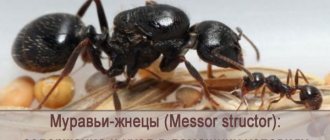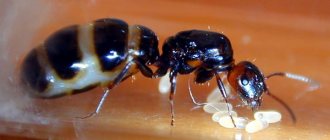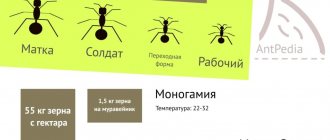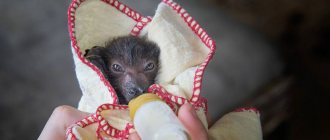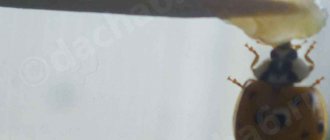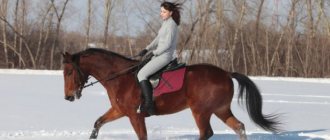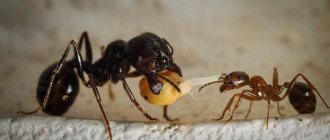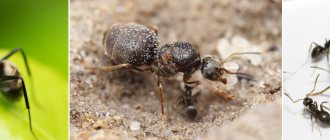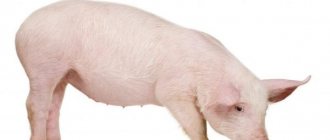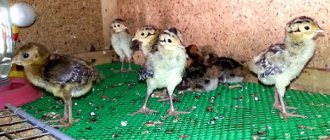Hello! Today the main character of the article is steppe harvester ants (Messor constructor) . I'll tell you about maintenance, care, what to feed, and how to moisturize. My journey as a keeper began with harvester ants, because the species does not require care. Still, there are factors due to which the colony is doomed, so read the material to the end to save nerves, time and the life of your pets.
small infographic from me)
general information
From Latin messor - reaper, structor - builder. Reaper builder. They got their name because they live in the steppes and feed on the grains of steppe plants. They build anthills, which are a deep vertical passage. They often dig down to groundwater, which is why they even inhabit deserts.
Belongs to the tribe Pheidolini as part of the Myrmicinae subfamily. They are the largest representatives in their family. The genus Messor includes 110 species of ants adapted to life in the desert zone on almost all continents. Thus, 30 species live in Europe alone, 5 of them in Russia:
- Messor aciculatus;
- Messor denticulatus;
- Messor kasakorum;
- Messor rufitarsis;
- Messor constructor.
The size of the colony reaches up to 5,000 individuals.
One anthill can destroy up to 2000 pests. This is a huge benefit for plants.
In nature
Reapers build anthills in the ground, collecting grains and seeds that they can find in special storage facilities, hence the name of the species. These ants are quite thrifty; they can collect up to fifty kilograms of grain from one hectare during the year, which is approximately equal to a tenth of the harvest collected by people. These are the economic kids.
One colony can number from three to five thousand individuals. By the way, despite its wide distribution as inhabitants for formicaria, the species of reapers in Tatarstan is endangered, and therefore listed in the Red Book, and independent catching of Messor Miticus (formerly Structor) in the territory of this country is prohibited. Summer time for reapers in the southern regions of Russia is mid-March.
Features of appearance and structure
Reapers have developed polymorphism. The colony is divided into classes:
- Uterus (15 mm);
- Worker ant (4-9 mm);
- Transitional form (10 mm);
- Soldier ant (11 mm).
The connection between the abdomen and the rest of the body is thin and seemingly fragile. There is evidence that the uterus died after falling from a small height. It doesn't sound plausible. There is a sting, but it is reduced. They don't use it.
There is a transitional form between the soldier and the working individual. They are formed due to a lack of protein for the development of full-fledged soldiers. They are already developing massive occipital muscles, which are responsible for the work of the lower jaws.
The species is not aggressive; the soldiers are essentially millers. With their huge jaws, the ants grind large seeds into flour, which is then mixed with saliva. Both ants and larvae feed on the mixture.
Reproduction
Living conditions even affected the breeding habits of reapers. Most ants raise sexually mature individuals by late spring or early summer. Reapers emerge in late summer, spend the winter in the nest, and begin breeding in April. This gives them the opportunity to build an anthill under favorable conditions, while the steppe soil is not dry and the ambient temperature is not yet so high.
Each harvester ant nest contains one queen. At the stage of nest formation there may be several of them, but then the ants expel or eat the extra ones. The males, having fertilized the female, die.
The harvester ant is an insect with a full development cycle: egg, larva, pupa, adult. The first three stages take up to 2-3 weeks each. Reaper ants are characterized by two methods of reproduction: asexual and sexual. Asexual is represented by parthenogenesis, it leads to the birth of worker ants. In the sexual method, males and females are born.
What to feed harvester ants
Evolutionarily, Messor structor has adapted to feed on grains of steppe plants. Mostly, they collect grains that have fallen to the ground. If they encounter an insect along the way, they can deal with it, because it is an additional source of protein.
Carbohydrates are needed by adult workers to serve the colony, protein primarily by larvae to grow, and by the queen to lay eggs.
If you feed only seeds, this will be enough for the development of the colony, but the queen will not lay eggs as often, and the workers and soldiers will be smaller. I think everyone loves the reapers because of the soldiers with their huge jaws. I try to add live protein to my diet.
What seeds to give
Everything that grows in the steppes. If the colony is young, there is a queen and a dozen workers, then give poppy seeds. The fact is that the first generation is smaller. It is difficult for them to crack large seeds. After the soldier ants appear, feel free to treat them with huge seeds. Their jaws can handle any grain.
I found on the Internet the results of testing on 30 colonies of one keeper. Next, I will give a table with the results. I feed with purchased formula, now I sell it myself. Additionally, I give a medicine beetle once a week.
How to Make Reaper Feeding Mix
We take equal amounts of pumpkin seeds, millet, poppy seeds, and flax. It comes in white and brown, the only difference being that white is less mature than brown. Amaranth, hemp seed, mustard, rapeseed.
I mix it in equal proportions and feed it to the ants.
| Grain crop | Eating percentage |
| Poppy | 100% |
| Millet | 80% |
| Pumpkin seeds | 90% |
| Meadow grass seeds | 50% |
| Bran | 20% |
| Wheat | 40% |
| Hercules | 60% |
| Corn | 70% |
| Wheat flour | 10% |
| Sunflower seeds | 40% |
| Dandelion seeds | 80% |
| Boiled rice | 60% |
| Dry rice | 0% |
The craftsman also gave vegetables and fruits to the ants. What happened is what happened. Let's look and study.
| Vegetables fruits | Percent |
| Plum | 90% |
| Pear | 100% |
| Apple | 80% |
| Melon | 70% |
| Watermelon | 40% |
| Green grapes | 20% |
| Pineapple zucchini | 90% |
| Boiled potatoes | 70% |
| Raw potatoes | 80% |
| Tomato | 30% |
| Cucumber | 40% |
In addition to seeds, harvester ants are given food insects. I use medicine beetle larvae. Of course, the choice is much wider.
Food insects for reapers
Mealworms;
Cockroaches (Turkmen, Madagascar, Argentine, Surinamese, marbled); Larvae of the medicine beetle and zofobas;
Flies and pupae. Fly larvae, maggots (there is an opinion that maggots are poisonous, rather very lively and dangerous).
Let me add that it is better to give insects to ants already wounded or slightly crushed. This is done to reduce casualties among ants. Until they can mobilize about 200 individuals for hunting. When the colony grows up, it will be able to cope with the enemy on its own.
In my case, the living food for harvester ants is the medicine beetle. This is enough for the development of the colony, and there is no fear that cockroaches will breed throughout the apartment. There is such a fear, but sooner or later I will buy Madagascar ones.
Reapers feast on the larva of a medicine beetle. Perhaps a doll =)
You can also try gammarus. It is sold as fish food. Its nutritional value will be lower than that of live food insects. Gammarus is a dried crustacean, which in the process of dehydration loses many vitamins in the flesh to the destruction of amino acids, but without fish, the cancer is a fish.
Fly - 100% - Maggot - 10% (there is an opinion that it is poisonous. It is not poisonous. But it is covered with sticky mucus, so hunters often simply kill while spending more time on self-cleaning. At the same time, the maggot itself is dangerous in battle (even when pierced by a needle, it resists fiercely. ) consists mostly of fat, so it is not suitable for small families, and is not particularly important for large ones.)
| Product | Successful nutrition |
| Fly | 100% |
| Maggot | 10% |
| Grasshoppers | 70% |
| Queens and males of their own and foreign species | 100% |
| Mole | 60% |
| Baby puree | 0% |
| Mosquito | 100% |
| Muchnik | 30% |
| Fruit midge | 100% |
| Moths | 50% |
| Earthworm | 70% |
| Midge | 100% |
| Yolk, white (chicken, boiled) | 95% |
| Ground beetle larva | 60% |
| Dried squid | 30% |
| Dried gamarus | 30% |
| Lizard tail | 40% |
| Chicken cooked/raw | 70%/50% |
| Pork cooked/raw | 60%/40% |
| Boiled/raw beef | 100%/90% |
| Boiled/raw beef liver | 90%/60% |
After such a list, I want to warn you. Caught insects can introduce parasites into the formicarium. Then you will have to withdraw, it’s a different story and money.
It is absolutely not necessary to give syrup and honey. Soldier ants grind large grains into flour. Ants get all their nutrients from grains.
Observe the colony; if there is no offspring or the workers eat it, it means the colony does not have enough protein.
Nutrition
Depending on what you feed the messor structor, the colony can develop quickly or slowly. Insects give a good boost. But it is worth remembering that reapers are not predators. In nature, they rarely attack other insects, being content with a grain diet.
At home, you can also limit yourself to cereals, but in this case the size of the individuals will be on the border of the lower value, and you can wait a very long time for the first soldiers to appear. By feeding the colony with insects, the keeper provides it with the necessary substances for growth and development, as a result, individual individuals become larger, and quite a lot of soldiers appear in the population.
Important to remember
that colonies up to a hundred individuals in size are not able to cope with living insects on their own, and in general it is better to give the reapers slightly crushed insects to make their task easier. But feeding the reapers is completely optional.
Development speed of harvester ants
Stages of development:
- Egg (1-3 weeks)
- Larva (1-3 weeks)
- Pupa (1-3 weeks)
- Adult (3 months – 3 years)
Eggs, as I noticed, appear immediately in large volume. And they stick together into a ball, most likely for ease of movement.
The larva hatches and grows. This is the most important stage at which it is decided who she will become: a worker or a soldier. The more the squirrel eats, the larger it will be. Ants constantly feed, carry, and moisturize it. It's fun to watch.
The pupa is motionless and helpless. Reapers do not have a cocoon as such. First, the colorless outline of the ant appears, the eyes begin to turn black, and soon the body turns brown.
A young ant differs from its fellows in being lighter in color. After 3-5 days, it can no longer be distinguished from other ants. At this stage, the ant stops growing. Most likely, it is overgrown with powerful chitin.
The journey from egg to ant takes 1-2 months. Depends on conditions, quality and quantity of feed. Adults can live up to 3 years, in nature often several months. Features of behavior
Harvester ants are messy creatures that leave a lot of trash. They feed on grain, leaving a lot of husk and skin behind. Some seeds are simply thrown into the trash. The trash can may be placed next to the living cells. So you don’t have to go far, there is logic in all actions.
One day, I watched a reaper compacting garbage. He lay down on the border between clean and dirty, moving the garbage with his paws. like children drawing butterflies in the snow. After which the ant took several steps forward or sideways and lay down on its abdomen to “draw a butterfly.” It looked funny, it's a pity I didn't take a photo.
They themselves are not aggressive, but they can stand up for themselves; if an enemy of the colony comes, they will sort it out.
Considered to be a cowardly, slow species. They are afraid of light, vibrations and in general everything that looks at them. Many keepers joke that the reapers don’t need to be covered, because at most one scout will escape. I will say this, the scout will not be alone, and if they find a more comfortable place, it will not be so easy to return. I caught scouts on the table several times.
One day, an ant crawled into closed compartments. Hoping that he would return home, he opened the hole. The whole colony immediately rushed there. I closed the compartment. It turned out that if I open a hole, all the ants run there. If not, he will die of hunger.
I ended up killing two ants trying to quickly open and close the deadbolt.
After some thought, I simply removed the rivet. An hour later, the uterus and offspring had already moved to the new cast. Everyone is happy.
Larvae and eggs are a separate issue. Nannies run around with them all day. They drag you from one cell to another. It’s especially noticeable when you add water. They may even hang on the ceiling with them. I would say that they have a cult of caring for offspring.
If you didn’t have the strength to read the article, then I’ll summarize:
The basis of the reapers' diet is grain. Add some live protein, preferably in the form of food insects. Regularly moisten the formicarium, while making sure that mold does not grow in it.
In the formicarium
As inhabitants of an ant farm, reapers behave rather unpretentiously
, thanks to their non-predatory nature, they are harmless and quite slow, which makes the species interesting and accessible to observation.
The average size of an individual is 3-9 millimeters; thanks to their natural characteristics, they can easily tolerate a slight lack of humidity and a slightly elevated temperature. By class, representatives of the species are divided into workers, soldiers, scouts and nannies.
When and how to introduce ants to your farm:
- Wait until the queen has a colony of about 50 individuals.
- Do not give food for several days.
- Connect the test tube to the arena and place plant seeds on the arena.
- Shade the formicarium and illuminate the test tube.
- Wait for the colony to move.
Sometimes everything described may not be enough, since reapers in nature rarely change their homes, and then you can try to carefully shake them out of an old test tube into the arena. When doing this, you need to be especially careful with the queen - she has a thin waist, damaging which can easily kill the queen.
